26th August, 2025
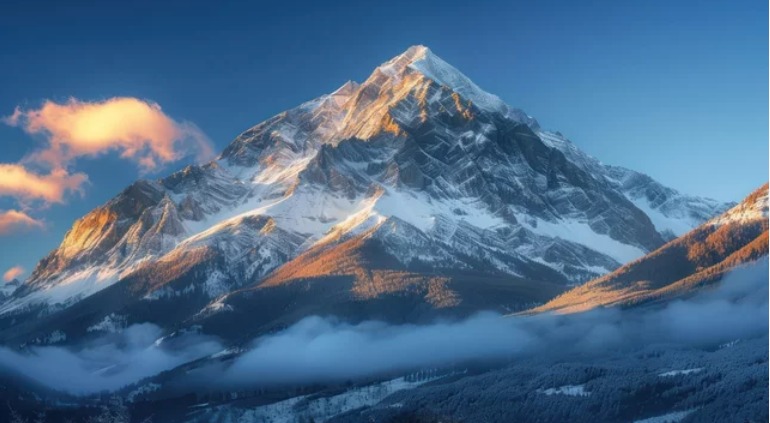
May 14, 2024
Island Peak Climbing In July
- What time of year is best to climb Island Peak?
- Can a beginner climb the Island Peak?
- Can you climb Everest in July?
- What is the difficulty grade for Island Peak?
- Island Peak Climbing Weather in July
- Highlights of Island Peak Climbing in July
- How Difficult is Climbing Island Peak?
- Can We Do Everest Base Camp with Island Peak?
- I Never Climbed a Mountain: Can I Climb Island Peak?
- Island Climbing Peak Permit Cost
- Permit, Guide, and Porter for Island Peak
- How Much Does it Cost to Climb Island Peak?
- Altitude Sickness with Acclimatization
- I Never Climbed a Mountain: Can I Climb Island Peak?
- Packing Lists for Island Peak Climbing
- Tips to Climb Island Peak
- Training for Island Peak
- Final Say
- Island Peak Climbing Packages
Island Peak, standing prominently at 6,189 meters (20,305 feet), beckons adventurers seeking a thrilling mountaineering challenge amidst Nepal's monsoon season in July. Located in the iconic Everest region, Island Peak, also known as Imja Tse, offers a blend of technical climbing and awe-inspiring Himalayan landscapes.
July marks the onset of Nepal's monsoon season, bringing varying weather patterns across the Everest region. Lower elevations experience lush greenery and blooming wildflowers due to increased rainfall, while higher altitudes encounter challenges such as slippery trails and occasional storms. Climbers must navigate muddy paths and be prepared for reduced visibility due to cloud cover, necessitating careful planning and flexibility in itinerary.
Climbing Island Peak in July demands thorough preparation and readiness for unpredictable weather conditions. Essential gear includes waterproof and breathable clothing to combat rain and maintain warmth amidst cooler temperatures. Technical climbing skills are crucial for negotiating steep ascents, crevassed glaciers, and icy sections using ropes, crampons, ice axes, and harnesses. Physical fitness and proper acclimatization are paramount, with gradual ascent schedules and rest days to mitigate altitude-related risks.
Despite the weather challenges, July offers unique advantages for climbers. With fewer trekkers and climbers compared to peak seasons, July provides a quieter and more serene experience on the trails. The verdant landscapes and clear morning views before clouds settle in enhance the allure of Island Peak climbing during this time. The monsoon rains also bring cooler temperatures at lower elevations, offering relief from the heat during strenuous trekking days.

ISLAND PEAK CLIMBING
Sherpa Expedition & Trekking (Est.1977) are pleased to announce FOR ADVENTURERS the most awesome, exhilarating & unforgettable climbing and treks on offer anywhere today!...
Beyond the physical demands, climbing Island Peak in July allows climbers to immerse themselves in Sherpa culture and traditions. Trekking through picturesque villages such as Namche Bazaar and Pangboche provides opportunities to interact with locals, visit Buddhist monasteries, and gain insights into Sherpa heritage amidst the backdrop of towering Himalayan peaks.
Climbing Island Peak in July promises an unforgettable adventure for mountaineers seeking a challenging yet rewarding experience in Nepal's high-altitude wilderness. With meticulous preparation, including weather-appropriate gear, technical proficiency, and respect for altitude-related safety protocols, climbers can conquer Island Peak and witness the unparalleled beauty of the Everest region during the monsoon season. July's quieter trails and vibrant landscapes offer a unique opportunity to explore the Himalayas in a more intimate and immersive manner, ensuring a memorable expedition amidst nature's grandeur.
What time of year is best to climb Island Peak?
The best time to climb Island Peak, located in the Everest region of Nepal, is during the pre-monsoon (spring) and post-monsoon (autumn) seasons. These periods typically fall between March to May and September to November. During these months, the weather is more stable with clearer skies, making it ideal for climbing. Spring offers mild temperatures, blooming rhododendrons, and longer daylight hours, while autumn provides post-monsoon clarity and pleasant trekking conditions. These seasons minimize the risk of precipitation and ensure safer climbing conditions on the technical sections of the route.
Can a beginner climb the Island Peak?
Island Peak is considered a suitable climb for those with basic mountaineering experience. While it involves technical sections such as crevassed glaciers and steep icy slopes, climbers with prior trekking experience and some level of fitness can undertake the ascent with proper preparation and guidance from experienced climbers or guides. However, beginners should undergo training in basic mountaineering skills, including the use of crampons, ice axes, ropes, and harnesses, to safely navigate the route and manage the challenges presented by high-altitude conditions.
Can you climb Everest in July?
Climbing Mount Everest in July is generally not recommended due to the monsoon season in Nepal. July brings heavy rainfall, increased cloud cover, and unstable weather conditions, making it challenging and risky to attempt a summit. The monsoon affects visibility, trail conditions, and safety, posing significant hazards to climbers. Most expeditions to Everest are scheduled during the pre-monsoon (spring) and post-monsoon (autumn) seasons when weather conditions are more favorable for summit attempts.
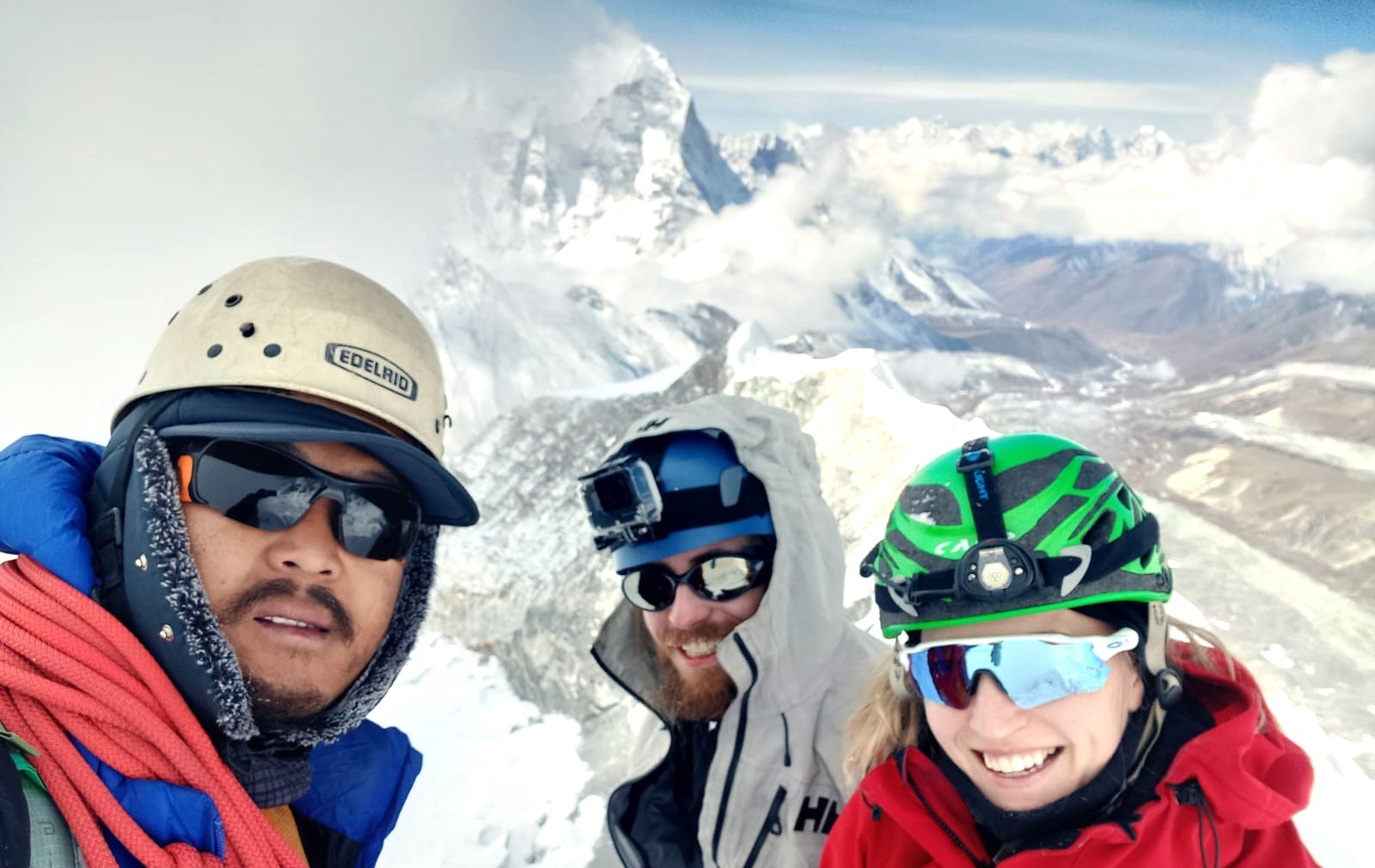
ISLAND PEAK EXPEDITION 15 DAYS
Island Peak, also known as Imja Tse, is a popular peak located in the Khumbu region of Nepal. This peak is a part of the Himalayas and stands tall at a height of 6,189 meters above sea level. Island P...
What is the difficulty grade for Island Peak?
Island Peak is graded as a moderately difficult climb in mountaineering terms. It requires climbers to possess basic mountaineering skills and physical fitness to navigate technical sections such as glacier crossings, steep ascents, and rocky terrain using crampons, ropes, ice axes, and harnesses. The climb involves altitudes above 6,000 meters (19,685 feet), where climbers may experience altitude-related challenges. With proper preparation, including acclimatization and technical training, climbers can successfully summit Island Peak and enjoy the breathtaking views of the Everest region.
Island Peak Climbing Weather in July
July is characterized by the onset of the monsoon season in Nepal, bringing increased rainfall, cloud cover, and fluctuating weather patterns to the Everest region. At lower elevations, the monsoon brings lush greenery and blooming wildflowers, while higher altitudes encounter challenging conditions such as muddy trails, slippery surfaces, and reduced visibility. Climbers should expect cooler temperatures due to rain and cloud cover, requiring appropriate gear for warmth and protection against moisture. Despite the weather challenges, July offers a quieter trekking experience with serene landscapes and cultural encounters amidst the Himalayan wilderness.
Highlights of Island Peak Climbing in July
Climbing Island Peak in July offers unique experiences amidst Nepal's monsoon season. The lush greenery and blooming wildflowers create vibrant landscapes, adding to the natural beauty of the Everest region. July's quieter trails provide a serene trekking environment with fewer tourists, allowing climbers to enjoy the solitude and tranquility of the Himalayan wilderness. Cultural interactions with Sherpa communities and visits to Buddhist monasteries enrich the journey, offering insights into local traditions amidst the backdrop of majestic peaks. Despite the weather challenges, July presents adventurous climbers with an opportunity to conquer Island Peak and witness the stunning vistas of the Everest region in a distinct and immersive manner.
How Difficult is Climbing Island Peak?
Climbing Island Peak is considered moderately difficult in mountaineering terms. Located in the Everest region of Nepal, it requires basic mountaineering skills and physical fitness. The climb involves technical sections such as glacier crossings, steep ascents, and rocky terrain, necessitating the use of ropes, crampons, ice axes, and harnesses. Climbers must be prepared for high-altitude conditions above 6,000 meters (19,685 feet), where altitude-related challenges like acclimatization and weather conditions play crucial roles in the climb's difficulty. With proper training, preparation, and guidance from experienced climbers or guides, individuals with previous trekking experience can successfully summit Island Peak and enjoy panoramic views of the surrounding Himalayan peaks.
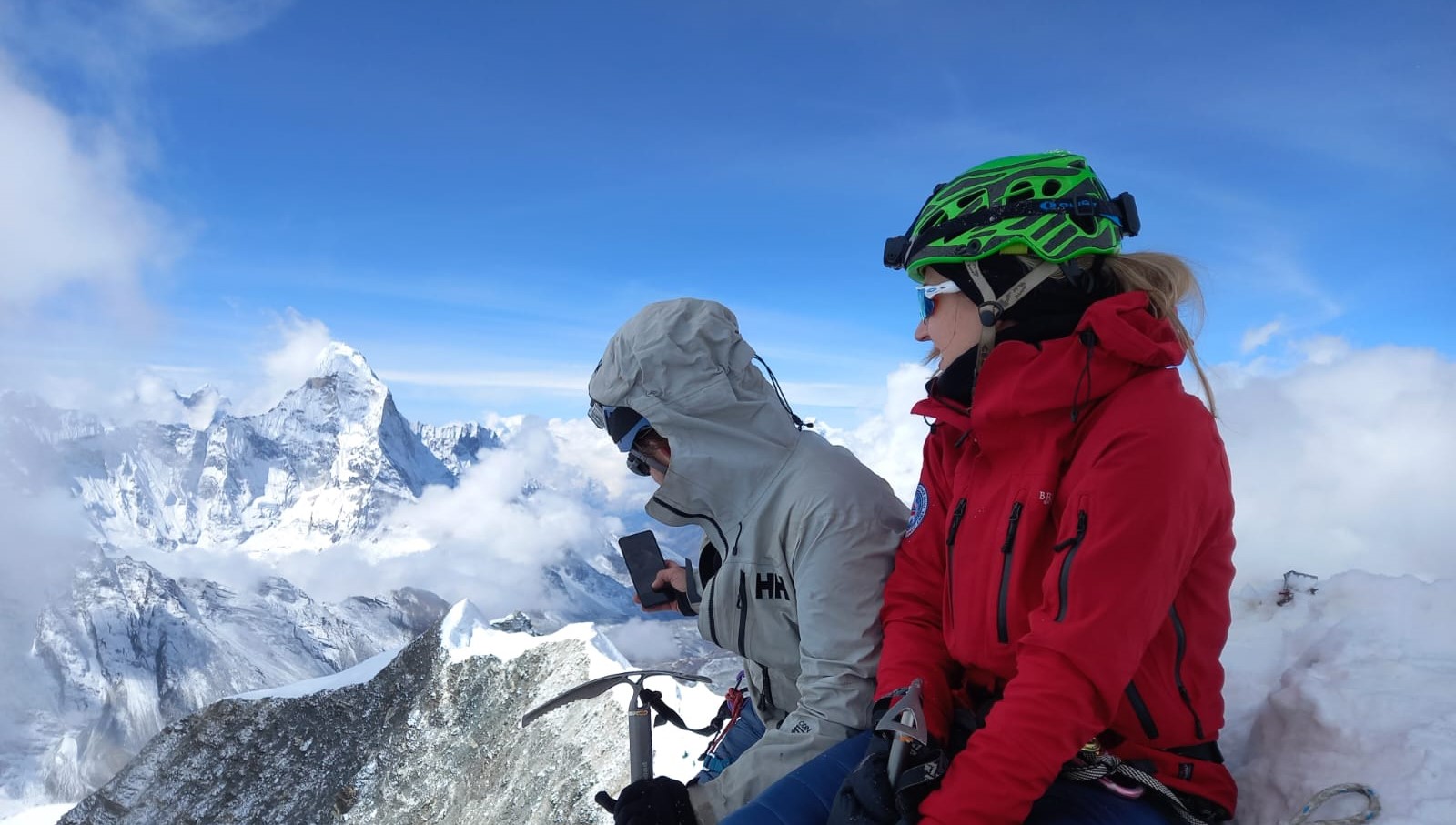
ISLAND PEAK EXPEDITION 14 DAYS
Island Peak Expedition is a 14-day adventure tour that takes you to the heart of the Himalayas, where you can witness the beauty of the mountains, valleys, and glaciers. Island Peak, also known as Imj...
Can We Do Everest Base Camp with Island Peak?
Combining Everest Base Camp (EBC) trek with Island Peak climbing is a popular adventure itinerary in the Everest region. The journey starts with the iconic EBC trek, offering scenic views, cultural experiences in Sherpa villages, and visits to Buddhist monasteries. After reaching Everest Base Camp, climbers continue to Island Peak Base Camp for technical training and acclimatization. The ascent to Island Peak involves crossing crevassed glaciers and ascending steep slopes using mountaineering equipment. This combined expedition provides adventurers with a comprehensive Himalayan experience, blending trekking, cultural immersion, and mountaineering challenges in the heart of the world's highest mountain range.
I Never Climbed a Mountain: Can I Climb Island Peak?
While climbing Island Peak requires basic mountaineering skills and physical fitness, it is feasible for individuals without prior mountain climbing experience. Beginners should undergo training in essential mountaineering techniques, including the use of crampons, ice axes, ropes, and harnesses, to safely navigate technical sections of the route. Acclimatization and gradual ascent schedules are crucial for adapting to high-altitude conditions above 6,000 meters (19,685 feet) and mitigating the risks of altitude sickness. Engaging with experienced guides or joining organized expeditions provides valuable support and guidance throughout the climb, increasing the likelihood of a successful summit attempt and memorable adventure in Nepal's Himalayas.
Island Climbing Peak Permit Cost
The permit cost for climbing Island Peak includes various fees required for mountaineering activities in Nepal. As of recent updates, climbers need to obtain permits such as the Sagarmatha National Park Entry Permit and the Island Peak Climbing Permit. The Sagarmatha National Park Entry Permit costs approximately USD 30 per person, while the Island Peak Climbing Permit costs around USD 250 for up to four climbers, with an additional fee for each additional climber. These permits are essential for legal access to the Everest region and ensure conservation efforts are supported. Fees may vary, so climbers should check with authorized agencies or the Nepal Tourism Board for current permit costs and regulations.
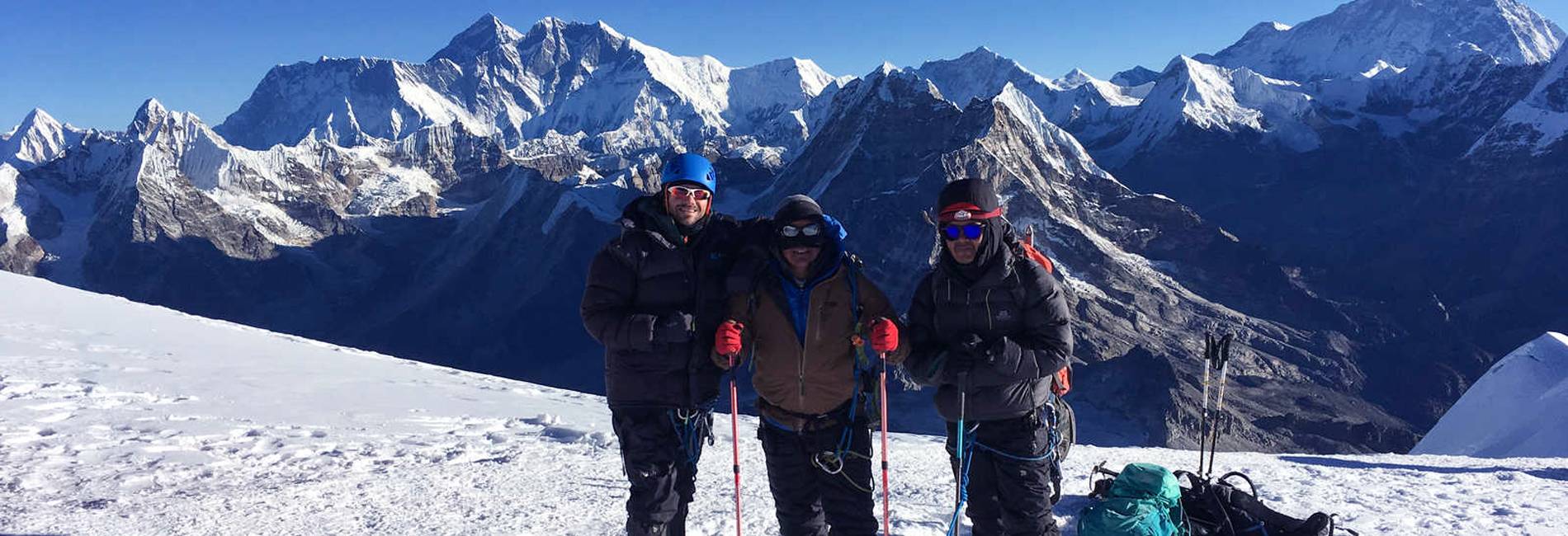
MERA PEAK CLIMBING
Mera Peak Climbing is an exhilarating adventure in Nepal that gives you an opportunity to reach the summit of Mera Peak at more than 6400m above sea level. Actually, it is the highest climbing (w...
Permit, Guide, and Porter for Island Peak
Obtaining permits, hiring guides, and porters are essential considerations for Island Peak climbing expeditions. Climbers need permits such as the Sagarmatha National Park Entry Permit and the Island Peak Climbing Permit, which regulate access and support conservation efforts in the Everest region. Hiring experienced guides familiar with the terrain and weather conditions ensures safety, navigation, and logistical support during the climb. Guides provide valuable assistance in route finding, technical advice, and emergency response, enhancing climbers' overall experience and success rate. Porters assist with carrying equipment and supplies, lightening climbers' loads and allowing them to focus on the ascent and enjoyment of the journey. Engaging with reputable trekking agencies or guides ensures compliance with permit requirements and enhances safety and enjoyment throughout the Island Peak climbing expedition.
How Much Does it Cost to Climb Island Peak?
The cost of climbing Island Peak varies depending on several factors, including the trekking agency, services included, duration of the expedition, group size, and season. On average, climbers can expect to budget between USD 3,000 to USD 6,000 per person for a 15 to 20-day expedition. This cost typically covers permits (Sagarmatha National Park Entry Permit and Island Peak Climbing Permit), guide and porter services, accommodation, meals, trekking and climbing equipment rental, transportation, and insurance. Additional expenses may include international flights, visas, personal gear purchases, tips, and contingency funds. Choosing a reputable agency ensures safety, quality services, and support throughout the expedition, maximizing climbers' chances of successfully summiting Island Peak and enjoying a memorable adventure in Nepal's Himalayas.
Altitude Sickness with Acclimatization
Altitude sickness is a common concern when climbing high-altitude peaks like Island Peak. It occurs due to reduced oxygen levels at higher elevations, leading to symptoms such as headache, nausea, dizziness, and fatigue. Acclimatization, the process of gradually adjusting to higher altitudes, is essential to minimize the risk of altitude sickness. Climbers should follow recommended ascent schedules with gradual increases in altitude and adequate rest days for adaptation. Hydration, proper nutrition, and avoiding alcohol and tobacco help in acclimatization. Recognizing symptoms early and descending if they worsen is crucial for safety. Consulting with medical professionals and experienced guides provides valuable advice on managing altitude sickness during Island Peak climbing expeditions.

LOBUCHE PEAK EXPEDITION 14 DAYS
The Lobuche Peak Expedition is a 14-day trekking adventure that takes you to the heart of the Khumbu region in Nepal. It is a popular trekking peak in the Himalayas, with stunning views of the surroun...
I Never Climbed a Mountain: Can I Climb Island Peak?
Climbing Island Peak is feasible for individuals without prior mountain climbing experience but requires physical fitness and preparation. Beginners should undergo training in essential mountaineering skills such as using crampons, ice axes, ropes, and harnesses. Training programs focus on strength, endurance, and cardiovascular fitness to handle the demands of high-altitude trekking and technical climbing. Acclimatization and gradual ascent schedules are critical to adapting to altitudes above 6,000 meters (19,685 feet) and minimizing the risks of altitude sickness. Hiring experienced guides or joining organized expeditions provides support, guidance, and enhances safety throughout the climb. With proper preparation, determination, and guidance, novice climbers can successfully summit Island Peak and experience the thrill of reaching one of Nepal's iconic Himalayan peaks.
Packing Lists for Island Peak Climbing
Packing for Island Peak climbing requires careful consideration of essential gear and clothing to ensure comfort, safety, and preparedness for varying weather conditions. Key items include:
- Clothing: Layered clothing for warmth, waterproof and breathable jackets and pants, thermal base layers, gloves, hats, and sunglasses.
- Footwear: Sturdy and waterproof hiking boots with ankle support, crampon-compatible mountaineering boots, and gaiters.
- Climbing Gear: Climbing harness, ropes, ice axes, crampons, helmets, and trekking poles.
- Personal Gear: Sleeping bag suitable for sub-zero temperatures, backpack, headlamp with extra batteries, and water bottles or hydration system.
- Medical Kit: Including medications for altitude sickness, first aid supplies, and personal prescriptions.
- Miscellaneous: Sunscreen, lip balm, toiletries, and camera with extra batteries.
Consulting with trekking agencies or experienced climbers for a comprehensive packing list tailored to Island Peak climbing ensures climbers are adequately equipped for the expedition's challenges and conditions.
Tips to Climb Island Peak
Successfully climbing Island Peak requires careful planning, preparation, and adherence to safety guidelines:
- Physical Fitness: Train rigorously to build stamina, endurance, and strength for high-altitude trekking and technical climbing.
- Acclimatization: Follow gradual ascent schedules with rest days to adapt to altitude and minimize the risk of altitude sickness.
- Technical Skills: Familiarize yourself with using mountaineering equipment such as crampons, ice axes, ropes, and harnesses.
- Weather Monitoring: Stay informed about weather forecasts and conditions to plan climbing days strategically.
- Hydration and Nutrition: Stay hydrated and maintain a balanced diet to support energy levels and physical performance.
- Safety Measures: Follow safety protocols, listen to guides' instructions, and prioritize personal and group safety throughout the expedition.
By incorporating these tips and guidance from experienced climbers or guides, climbers can increase their chances of summiting Island Peak safely and enjoying a memorable adventure in Nepal's Himalayas.

LOBUCHE PEAK SUMMIT RETURN BY HELICOPTER
A real climbing adventure that will leave you stunned at the beauty of the Himalayan Mountains. The Lobuche Peak Climbing expedition in the spectacular Khumbu region of Nepal has been ranked by Lonely...
Training for Island Peak
Training for Island Peak involves a structured approach to build physical fitness and prepare for the demands of high-altitude climbing. Key training components include:
- Cardiovascular Fitness: Engage in aerobic activities such as running, cycling, and hiking to improve endurance and oxygen utilization.
- Strength Training: Focus on building strength in the legs, core, and upper body through weightlifting, bodyweight exercises, and functional training.
- Altitude Simulation: Incorporate altitude training if possible to simulate conditions experienced at high altitudes and enhance acclimatization.
- Technical Skills: Attend mountaineering courses or practice using crampons, ice axes, ropes, and harnesses under the guidance of experienced climbers.
- Endurance Testing: Participate in long-distance hikes or climbs to assess stamina and readiness for extended periods of physical exertion.
Tailoring training programs to individual fitness levels and goals ensures climbers are adequately prepared for the physical and mental challenges of Island Peak climbing. Consulting with fitness trainers, mountaineering guides, and medical professionals provides personalized advice and support throughout the training process.

CHULU WEST PEAK CLIMBING
Fulfill that inner craving to succeed and test your limits! Climb your way to 6419 meters.Make your way to the beautiful Annapurna region and climb Chulu West (6419m) and mark this off your list of th...
Final Say
Climbing Island Peak is a challenging yet rewarding adventure that requires careful planning, physical preparation, and adherence to safety protocols. Whether you are a novice or experienced climber, the journey to summiting one of Nepal's iconic peaks offers a unique blend of natural beauty, cultural immersion, and personal achievement. By investing in training, proper gear, and guidance from experienced climbers or guides, adventurers can embark on a memorable expedition to Island Peak and embrace the thrill of conquering one of the Himalayas' renowned summits.
Island Peak Climbing Packages
Island Peak Summit Return By Helicopter
Island Peak Expedition 14 Days
Island Peak Expedition 15 Days
Everest Three Pass with Island Peak Climbing
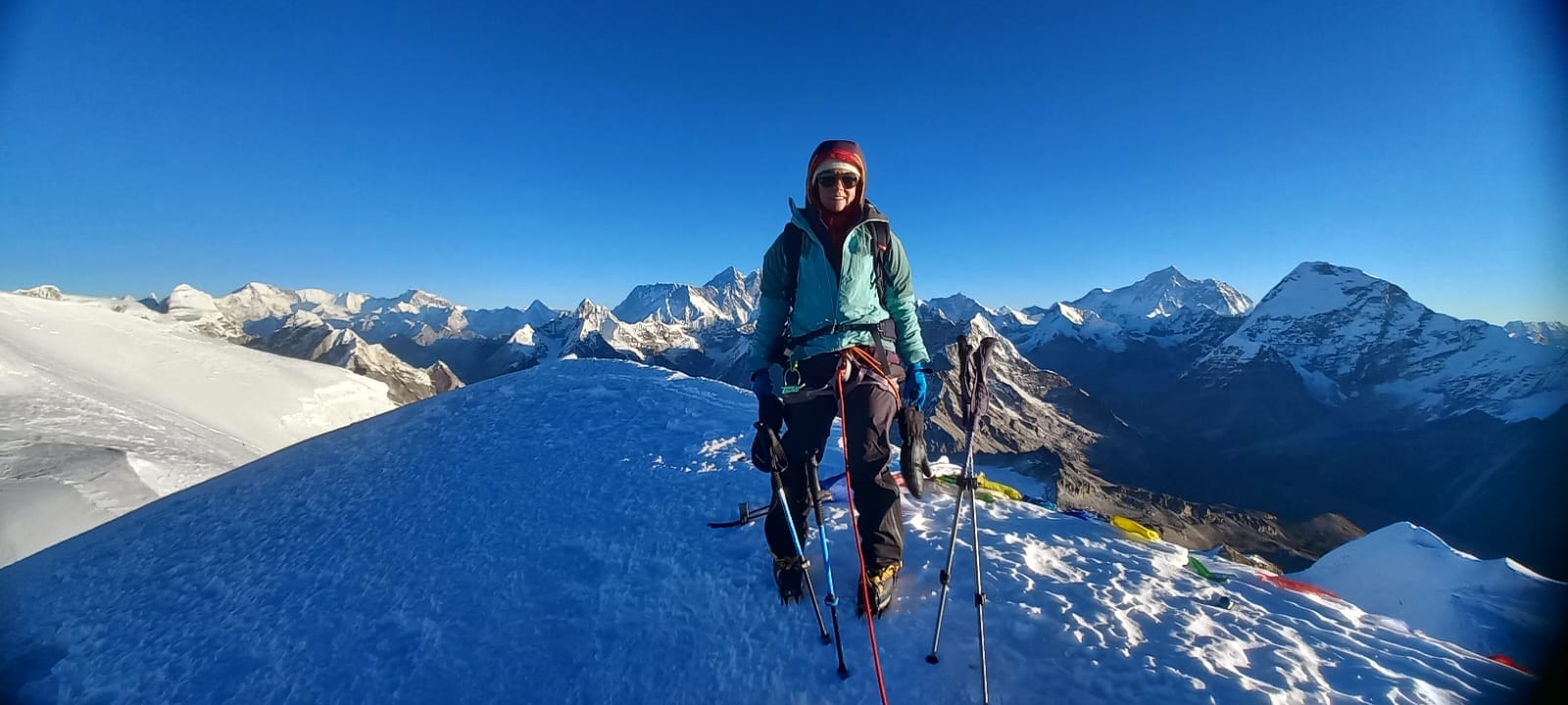
Three Peak Expedition
Embark on an unforgettable journey to the heart of the Himalayas as you conquer three majestic peaks: Mera Peak, Island Peak, and Lobuche Peak. This ultimate adventure combines technical climbing, bre...
Any Questions? Let Us Know.
Recent Posts
17th June, 2025


















